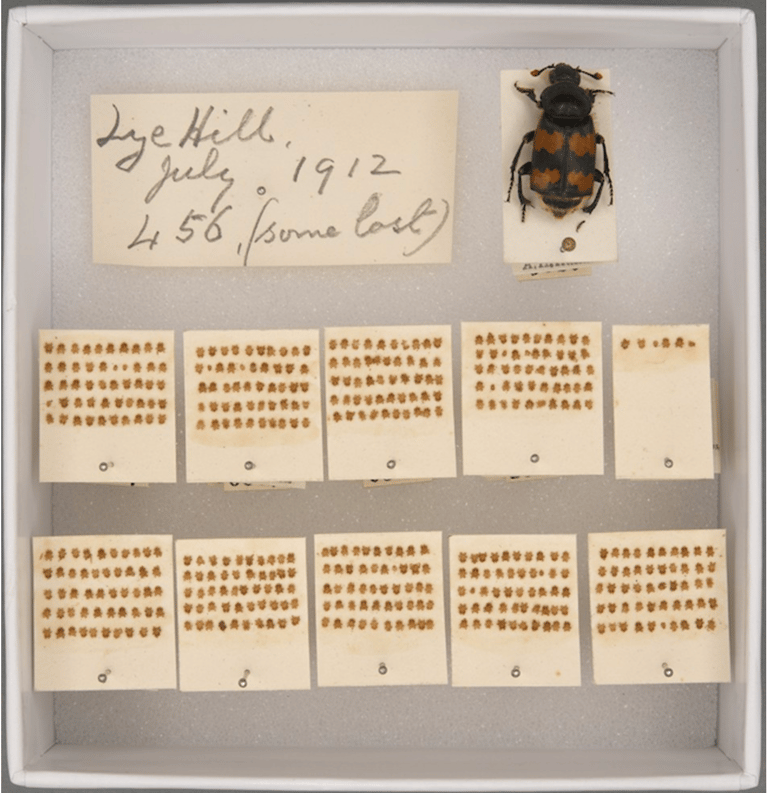Carrion Beetles


Saloña-Bordas MI, Spooner A, & Perotti MA. 2023
Four hundred and sixty-two mites for the ride: The phoretic companions of a historical Nicrophorus specimen (Coleoptera, Silphidae).
Acarologia 63, 1030-1038.
Burying beetles (Silphidae) and mites (Acari) have a well-established mutualistic interaction, and the phoretic mites will accompany their host even after its death. A voucher specimen of Nicrophorus vespillo (L., 1758) housed in the historical collection at the Oxford University Museum of Natural History (OUMNH) was examined for its 456 plus phoretic mites, which were carefully glued to cardboard slides and preserved together with the beetle carrier. Due to the fragility of the samples, only the Mesostigmata mites were prepared for mounting and further species identification. With the addition of 6 hypopi of Histiostomatidae, a total of 462 mites were identified. Four hypopi were found attached on the Parasitidae dorsal shields and two glued to the cardboard surface. The remaining 456 were composed of 445 specimens of two populations of Poecilochirus carabi Canestrini & Canestrini, 1882 (Parasitidae), and 11 specimens identified as two populations of Macrocheles nataliae Bregetova et Koroleva, 1960. We discuss the interaction and diversity of the numerous mites recorded on a single N. vespillohost. We propose that the presence of different populations of phoretic mites on a single carrier is beneficial to the mites, increasing their chances of outbreeding, adding to their genetic diversity. This study reports a new record of Acari-to-Acari hyperphoresy.